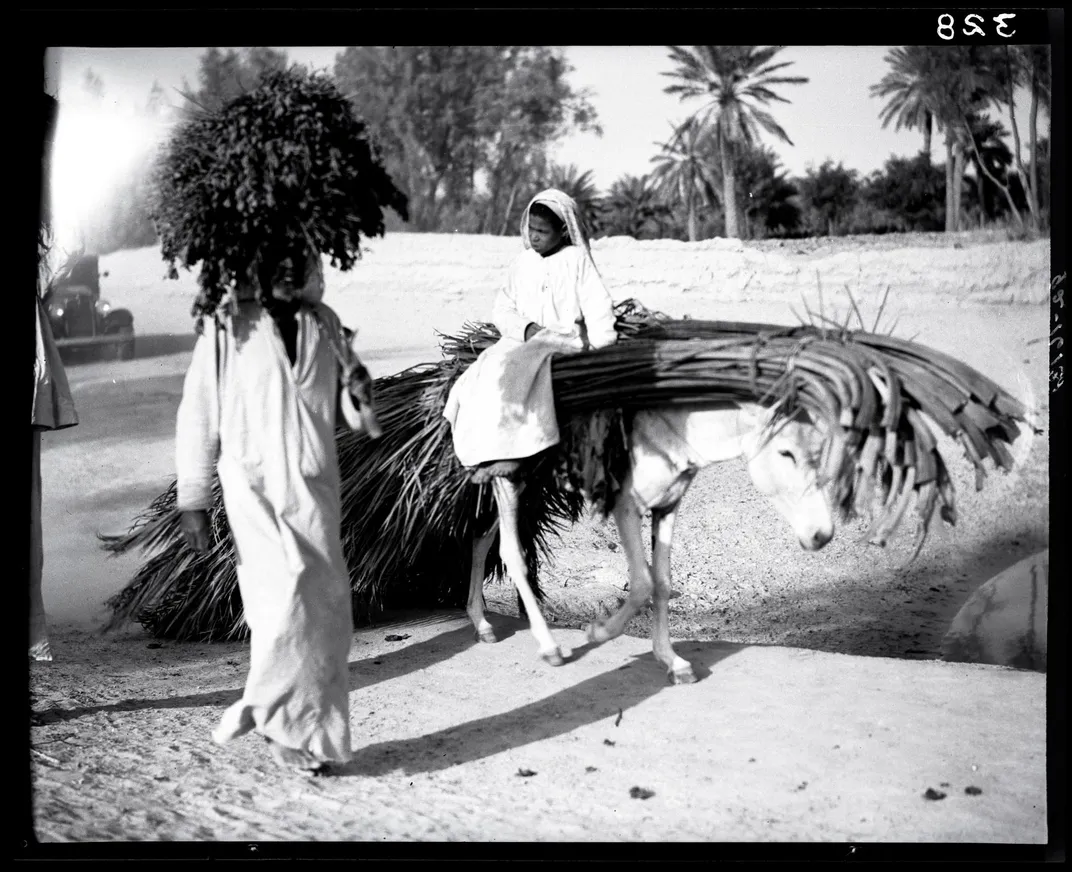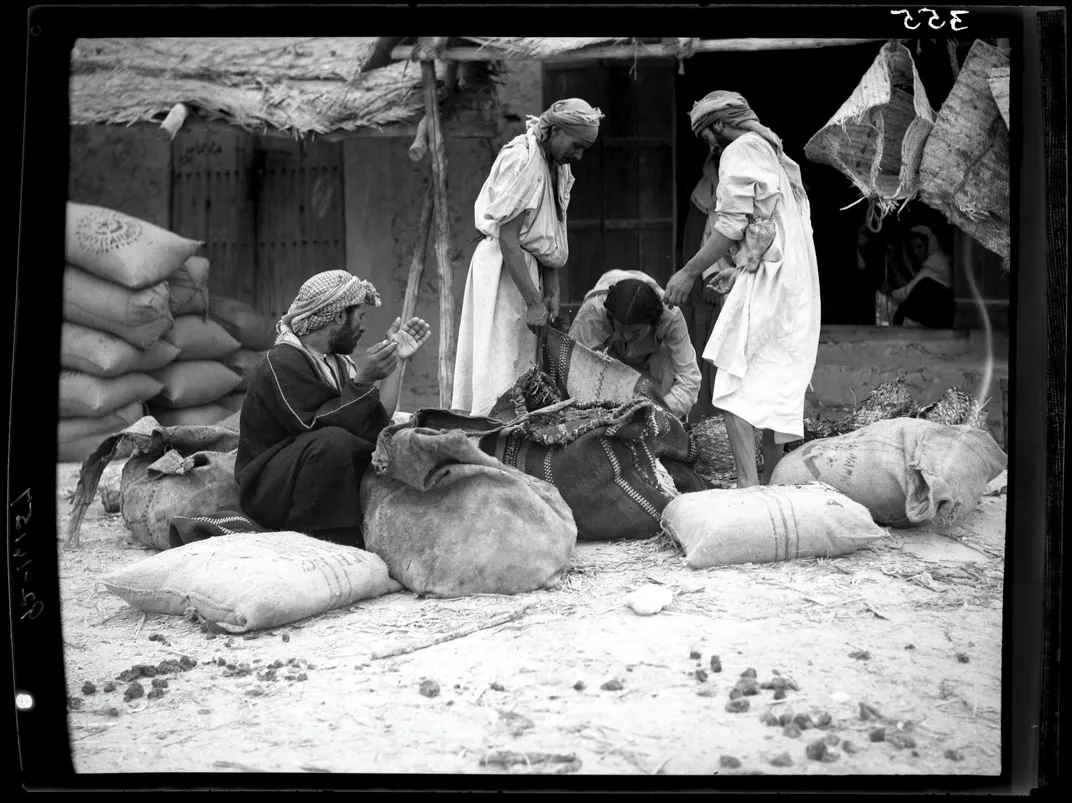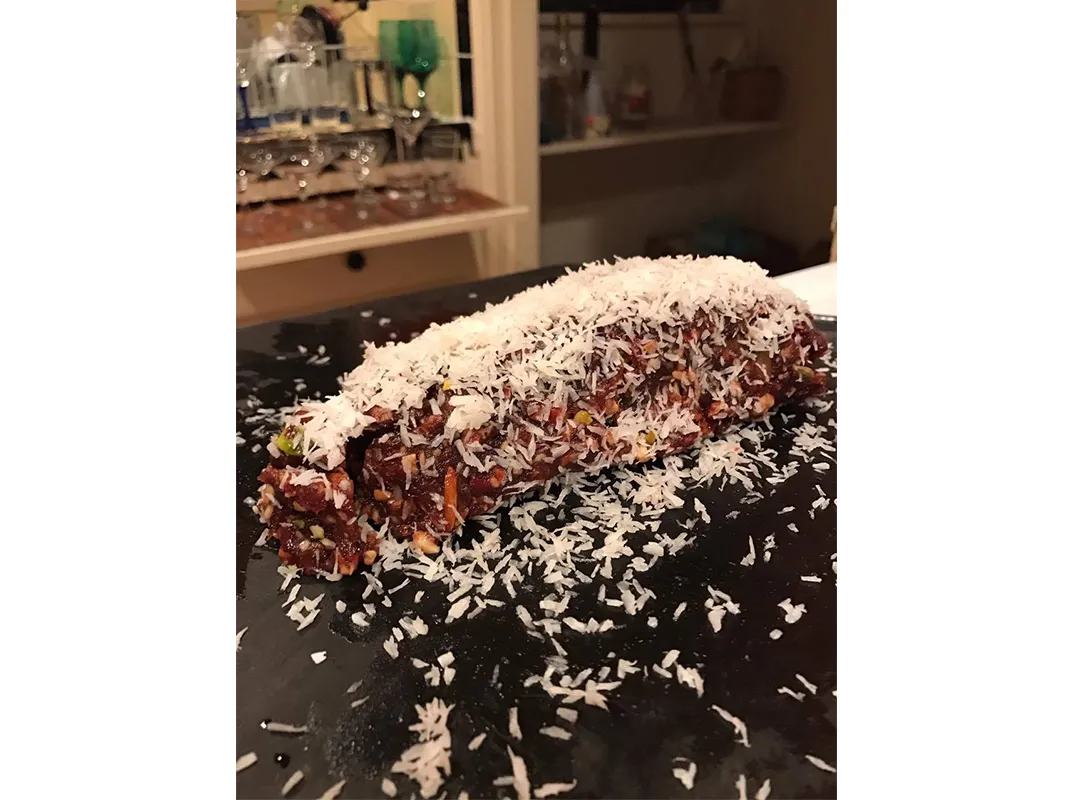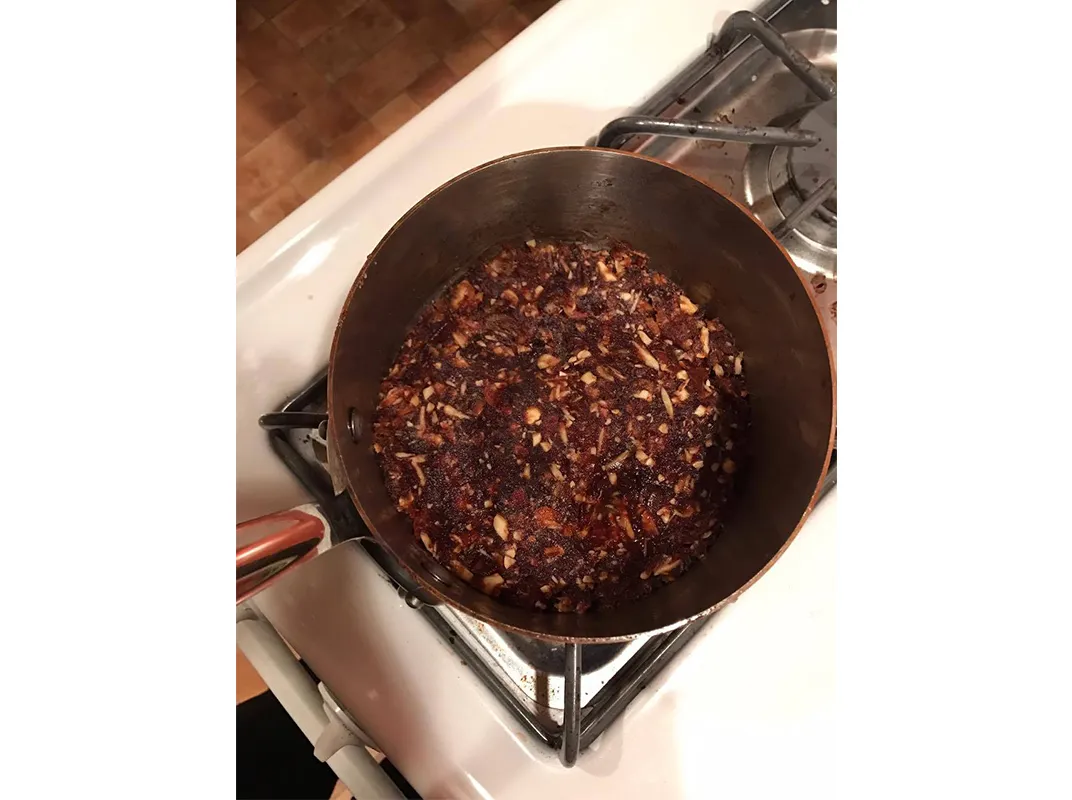Why the Scrumptious Date Is So Important to the Muslim World
The Prophet Muhammed said that Ajwah dates—grown in the Madinah region of Saudi Arabia—are from paradise
/https://tf-cmsv2-smithsonianmag-media.s3.amazonaws.com/filer/23/38/2338be52-0222-41e5-9bf6-66f1e242bbc1/img_5205.jpg)
It was at the age of four that I first became cognizant of the date. No, not the date where two people meet to get to know each other, but rather the fruit. The memory comprises jammy, sticky, cockroach-looking, oval-shaped yumminess. At the time, I wasn’t aware that this sticky-sweet drupe was in fact a fruit. It was much more than nature’s bounty.
As a child living in Karachi, Pakistan, the nutritious brown date was abundant at street vendors, weddings, religious ceremonies, holy days and celebrations. It was tied to the place and people, both culturally and religiously. As I was recognizing and relating to the world around me, I found that the opulent date was mystical. It was a traditional staple of holiness.
My anecdote is not one merely of aching childhood nostalgia, but rather one that lies inherently in Muslim identity. Although the two meanings of the word “date” bear no resemblance, they share a common thread. Going on a date brings two people together, while the fruit unites one of the largest and most diverse communities—the Islamic world.
Born in the seventh century, Islam brought many attributes to the modern world, one of which was the significance of the date palm. Although the date can be traced back to 4000 BCE in ancient Arabia, Islam has stressed the holiness of the date and the date palm more than any other religion. In fact, the Prophet Muhammed said that Ajwah dates—grown in the Madinah region of Saudi Arabia—are from paradise.
The date palm, mentioned more than any other fruit-bearing plant in the Qur’an—22 times—is a symbol often associated with Muslims, even as the religion has spread around the globe. Whether the fruit is called tamr (Arabic), khajoor (Urdu), hurmah (Turkish), or buah kurma (Indonesian), it is part of Muslim upbringing.
While the proverb “an apple a day keeps the doctor away” is known in much of the world, the Muslim equivalent is “seven dates a day keeps the doctor away.” The Prophet argued that seven dates in the morning protected one from poison and witchcraft. This gives the date a sort of mystical property, almost supernatural.
The Qur’an states that Mary was advised to eat dates while in labor with Jesus, to ease childbirth and strengthen the body. Experiments have also shown that dates contain stimulants that strengthen the muscles of the uterus in the last months of pregnancy. This helps the dilation of the uterus at the time of delivery and reduces bleeding. The Prophet emphasized the importance of dates in the growth of the fetus and reportedly put chewed dates into the mouths of newborns.
The Prophet was once reported to have said, “People in a house without dates are in a state of hunger.” Dates boast many vital nutrients, plus they are fat-free, cholesterol-free, and sodium-free. They contain vitamin A and numerous B-complex vitamins necessary for building healthy body tissue and muscle. Dates also contain many minerals, including magnesium, iron, phosphorous, copper, calcium and potassium. One date contains more potassium per weight than a banana. Additionally, dates have high sugar intake, making them Mother Nature’s candy for mortals.
Stressing these health benefits, the Prophet said to break the fast in the month of Ramadan with a date. Every Ramadan, breaking my fast with a khajoor feels transcendent. Within half an hour, the body regains vigor. It replenishes sugar in the blood, the lack of which is the main factor in feeling hungry, rather than an empty stomach. Following the Prophet’s tradition is one way of connecting with and remembering him, which is a spiritual experience for Muslims.
While most Muslims gobble the dry or soft dates out of hand, they are also prepared in different ways around the Islamic world, incorporated into local dishes. Most commonly, they are stuffed. In almost every Middle Eastern or North African country, you’ll find pastry shops that carry all kinds of stuffed dates. Almonds, walnuts, cashews, pistachios, pecans, candied orange, lemon peel, tahini, cheese—the stuffing options are endless.
One may also eat dates by baking them in cakes, cookies, desserts, pies and bread. The most popular of these is maamool, Middle Eastern cookies filled with date pudding. Blending dates into smoothies and shakes can be attributed to Iran, Pakistan, and India. One of the easiest ways to incorporate dates into the diet today, is by pitting and chopping them into salads, sandwiches and pastas. I recently tried Moroccan lamb tagine cooked with dates. The sweet flavor garnishing the tender meat was an exquisite savor. I have since been experimenting with dates in various dishes, but nothing beats my childhood dessert, khajoor ki mithai (dates in a fudge-like cookie), a Pakistani favorite. It’s also a very simple recipe.
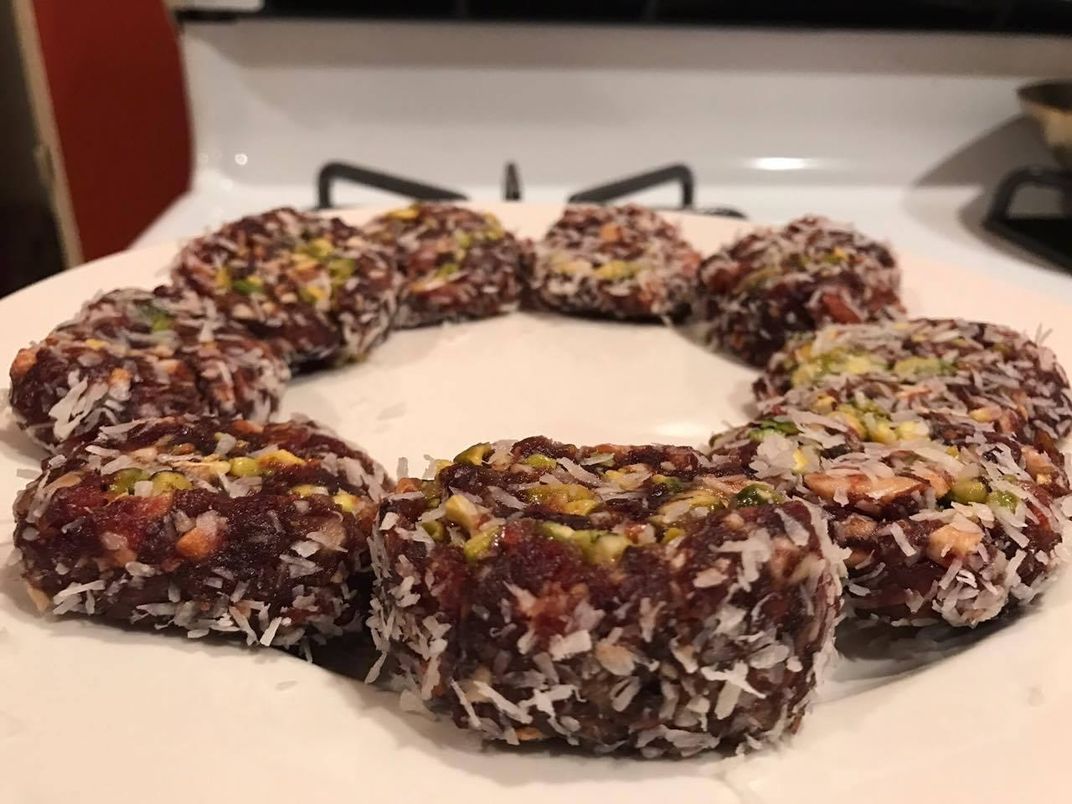
Recipe for Khajoor Ki Mithai
Ingredients
1/4 cup chopped pistachios
1/4 cup sliced almonds
1/4 cup chopped cashews
1 tbs. organic raw honey
1 lb. Medjool dates (about 36), pitted and chopped
2 tbs. organic ghee
Seeds from 4 cardamom pods, ground into powder
4-5 tbs. shredded dehydrated coconut
Preparation
- Chop pistachios and add them to a bowl along with honey. Mix well and set aside.
- Chop dates and add them to a saucepan over medium heat along with ghee and cardamom. Sauté for five minutes, stirring frequently so they do not burn.
- Reduce heat to low and stir until the mixture forms a paste (about five more minutes).
- Add almond slices and cashews and combine well. Let the mixture cool.
- Once you can handle the mixture, roll it out between two sheets of parchment paper.
- Place pistachio mixture along one edge of the date sheet. From that edge, roll into a log (like you would sushi).
- Roll the log in coconut flakes, cover in plastic wrap, and place in the fridge until firm (an hour or so).
- Once firm, cut into slices. Serve at room temperature.
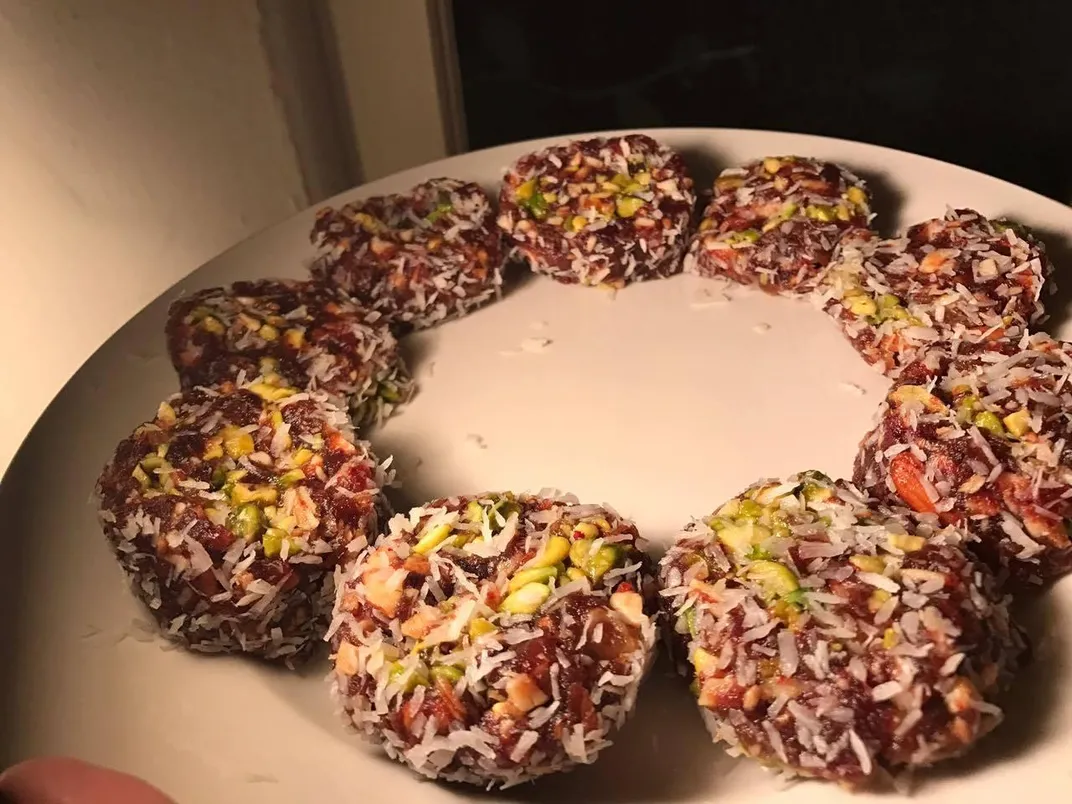
A version of this article by Madeeha Ahmed, a former intern at the Center for Folklife and Cultural Heritage in 2015, was published on the center's blog "Talk Story: Culture in Motion." Ahmed is a Pakistani immigrant, who moved to the United States in 2001 and got her B.A. in history from UCLA. She is currently a sixth grade teacher at a private nonprofit Muslim school in Los Angeles. This piece was written in collaboration with the Smithsonian Arthur M. Sackler Gallery’s exhibition The Art of the Qur’an: Treasures from the Museum of Turkish and Islamic Arts, on view through February 20, 2017.
